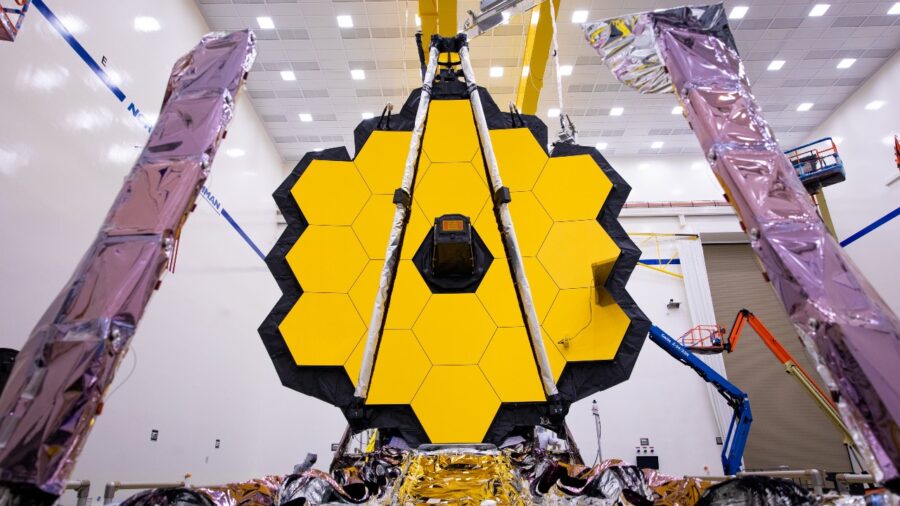First Look At Saturn’s Moon Could Mean Alien Life Is Out There?
This article is more than 2 years old

Ever since the James Webb Space Telescope became operational, there have been amazing photos of space being taken practically every month. The same can be said now, as the high-powered telescope has captured the first images of Saturn’s moon, which looks like it might be a clone of Earth that could host alien life. The image of the planet, which you can see below, showcases clouds, dark, and bright patches, meaning it could be a landmass and water as well.
Saturn’s moon, also known as Titan, was not visible through normal light. However, the James Webb Space Telescope has used an infrared setting, that has allowed the atmosphere and surface of the planet to be captured far more vividly. From the above image, it looks like Titan could be mistaken for Earth. Granted, the image is blurry, but it bears a striking resemblance to our planet and could mean that it can sustain alien life.
The team of researchers that have discovered this new image of potential alien life on Titan is from the Universite Paris Cité and is led by Sebastien Rodriguez, and the researchers used the Near-Infrared Camera, or NIRCam, to capture these new images of the moon. According to Rodriguez, “At first glance, it is simply extraordinary! I think we’re seeing a cloud.”
Researchers at the Keck Observatory in Hawaii were also enlisted to help to analyze data from the images of Titan, and they also found that the methane clouds that had been discovered had stayed in the same place. Also, the research indicates that these clouds are formed in the mid-northern hemisphere and appear when the sun is warming that area. Though the scientific community wouldn’t go so far as to say alien life could live there, the moon containing an Earth-like atmosphere is quite astounding.

Researchers have also determined that there could be methane liquids and other hydrocarbons that have formed lakes and rivers on the planet, that go along with what appears to look like Earth-like terrain. What is baffling is that this is the only moon that seemingly has the characteristics to host life, though if it is of an alien nature is an entirely different conversation altogether.
Titan had previously not been able to be photographed because of its hazy and dense atmosphere, which is why the NIRCam was used on the James Webb Space Telescope. These new images could help astronomers determine more about this planet, and if it could sustain life. There has been plenty of rumblings about the power of the James Webb Space Telescope used to determine if there is alien life in the cosmos, and finding out this formally photographic planet is like Earth might just be a huge step in proving that.
Whether or not scientists truly believe that alien life exists, the technology that is being used now has been capturing some of the most spectacular images of deep space that the world has ever seen. We hope to see more about Titan soon, and if it’s truly a clone of Earth.












